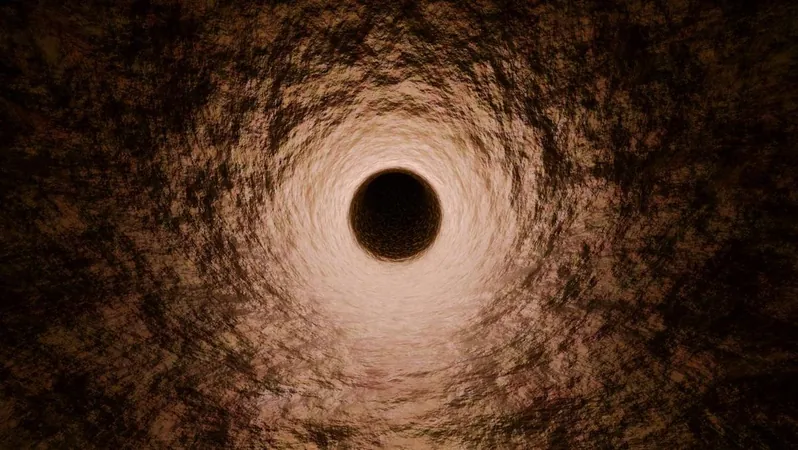
Unveiling the Secrets of Ancient Microbial Tunnels: Are We Alone?
2025-03-24
Author: Jia
In a groundbreaking discovery, scientists have found mysterious micro-burrows in the desert landscapes of marble and limestone that likely date back millions of years. These tiny tunnels, believed to have been created by ancient microbes, raise tantalizing questions about life forms that may have existed long before humans roamed the Earth.
The exact nature of the microbes that formed these intriguing structures remains a mystery. Researchers have yet to determine whether these ancient lifeforms are extinct or if they continue to exist in hidden niches of our planet. Regardless, the findings confirm that whatever created these burrows was once alive, as researchers were able to dismiss non-biological processes like weathering and erosion.
Geologist Cees Passchier from Johannes Gutenberg University Mainz stumbled upon these enigmatic burrows while exploring desert regions in Namibia, Oman, and Saudi Arabia. The erosional effects of time had exposed the hidden fossils, leading Passchier and his team to investigate deeper, discovering biological materials preserved within.
In their study published in the Geomicrobiology Journal, the researchers noted, “A biotic origin of the observed structures supposes the presence of liquid water, without which biological growth would be impossible.” Interestingly, while these areas currently appear arid, they have experienced wet periods in the past, suggesting a complex evolutionary history.
But what specific types of microorganisms could have been responsible for these burrows? Microbiologists suggest that bacteria, fungi, and lichens are all contenders. Some microbes can survive extreme conditions and even live inside rocks. While fungi and cyanobacteria can penetrate rock substrates, the characteristics of the burrows—particularly their size and structure—lead scientists to suggest they were likely formed by colonies of microorganisms rather than individual ones.
Notably, calcium carbonate dust, a common microbial excretion, was found inside the burrows, further supporting the idea of a biological origin. However, despite extensive research, no fossilized organisms have been discovered, only evidence indicating their existence.
Passchier and his team conducted thorough microscopic examinations and determined that the chemical composition within the burrows pointed toward biological activity. “As no known chemical or physical weathering mechanism can explain this phenomenon with the microstructural and geochemical observations, we suggest that they are of biological origin,” they concluded.
This tantalizing discovery opens the door to endless possibilities. Could there still be microbial life forms lurking in the depths of the planet, waiting to be discovered? The answer remains unclear, but the idea that ancient microorganisms once thrived in environments we now consider inhospitable invites further investigation.
As researchers continue to explore these ancient tunnels, the implications extend beyond understanding our planet's past. They challenge our knowledge about the survival of life in extreme conditions and raise fundamental questions: Are we truly alone in the universe, or is there more to discover about the ancient life forms that could still be waiting in the shadows? The quest to uncover these secrets continues—one burrow at a time.


 Brasil (PT)
Brasil (PT)
 Canada (EN)
Canada (EN)
 Chile (ES)
Chile (ES)
 Česko (CS)
Česko (CS)
 대한민국 (KO)
대한민국 (KO)
 España (ES)
España (ES)
 France (FR)
France (FR)
 Hong Kong (EN)
Hong Kong (EN)
 Italia (IT)
Italia (IT)
 日本 (JA)
日本 (JA)
 Magyarország (HU)
Magyarország (HU)
 Norge (NO)
Norge (NO)
 Polska (PL)
Polska (PL)
 Schweiz (DE)
Schweiz (DE)
 Singapore (EN)
Singapore (EN)
 Sverige (SV)
Sverige (SV)
 Suomi (FI)
Suomi (FI)
 Türkiye (TR)
Türkiye (TR)
 الإمارات العربية المتحدة (AR)
الإمارات العربية المتحدة (AR)